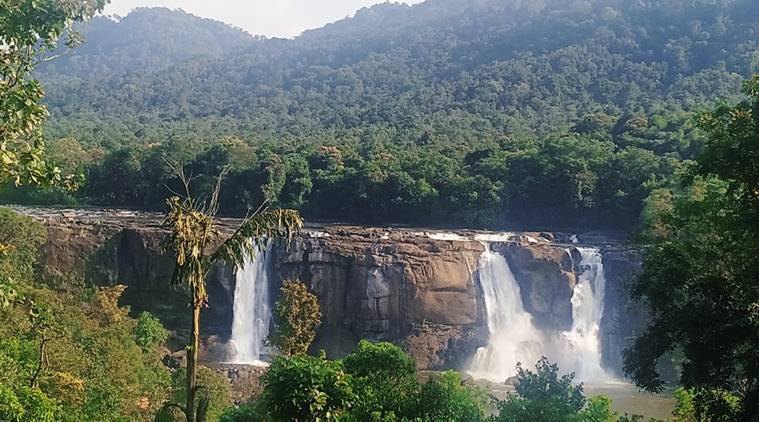 M K Prasad led the movement against the hydro-power project in Silent Valley in Palakkad district. (File Photo)
M K Prasad led the movement against the hydro-power project in Silent Valley in Palakkad district. (File Photo) In M K Prasad’s demise, Kerala has lost a doyen of environmental activism, at a time when a major environmental crisis is looming on the state’s horizon — the impact of the 292-km long and eight-metre-high “embankment” proposed for the K-Rail semi high-speed railway line. He was a prominent signatory to the open letter written to the Kerala Chief Minister by 37 progressive intellectuals on January 22, seeking a halt to the project.
Prasad was a leading member of the Kerala Sasthra Sahithya Parishad (KSSP; established in 1962) since 1967. An international biographer of the KSSP described it as “a people’s movement emphasising the role of science as a vehicle for self-reliance and popular participation in development, libertarian pedagogical approaches, the dignity of all persons, appropriate technology and a bottom-up approach to development… they see science as a vehicle for transformative education”. KSSP’s membership consists of experts in multiple domains and progressive activists. A professor of botany, Prasad was the leading biologist among them.
His direct involvement in Kerala’s environmental protection can be traced back to 1970 when KSSP began a movement to highlight air and water pollution in the Eloor industrial area near Kochi. Many public and private sector factories in the area were polluting the Periyar river and the air in the region. The first initiative to stop this pollution was taken by the Kochi Science Society. The movement reached KSSP through Prasad — perhaps the Parishad’s first direct involvement in an environmental protection movement. In the mid-1960s, N V Krishna Warrier, a founding leader of the KSSP, was engaged in activism in an individual capacity. But following the Kochi movement, KSSP became directly involved in environmental activism.
In 1977, the Kerala government was going ahead with a plan to build a hydroelectric project across the river Kunthi that flows through Silent Valley, the evergreen rainforest in the Palakkad region. The dam was to come up right in the interior of the forest. KSSP was initially reluctant to get involved in any resistance against the project because it believed in the need to generate electricity for people’s welfare. At the instance of Satish Chandran Nair, an ecologist who had walked around extensively inside Silent Valley to study its ecological importance, Prasad visited the rainforest in 1977. He was convinced of the importance of preserving this rich treasure of biodiversity. The submergence of 830 hectares of forestland, from which the streams and tributaries of the Kunthi originate, would have destroyed the riparian ecosystem. After that visit in 1977, Prasad started publishing his findings in local science and literary journals.
In the KSSP members’ camp held at Kalady in 1977, a resolution drafted by Prasad asking the organisation to oppose the project was presented. Prasad was not present at the meeting. The participants at the camp did not approve the resolution but resolved to investigate the matter. A committee consisting of Prasad, M P Parameswaran and K P Kannan, among others, was constituted. Their 1978 report, “The Silent Valley Hydro-Electric Project: A Techno-Economic and Socio-Political Assessment” persuaded the KSSP to join the resistance movement to save the Silent Valley. So, in a sense, Prasad’s first visit to the Silent Valley was a watershed in KSSP’s history.
KSSP is a left-leaning organisation. At a time when left parties strongly supported the project, it was difficult to go against it on ecological grounds. In the EPW in 1998, historian Ramachandra Guha described KSSP as an “ecological Marxist” organisation.
The late poet Sugathakumari had written that she was attracted to the Silent Valley movement after reading an article by Prasad in Mathrubhumi. She was among the poets and writers who, under the leadership of N V Krishna Warrier, formed an organisation in 1980 to save the Silent Valley. It was a unique movement in world history, wherein writers came together to resist environmental destruction. The only other similar instance I know of is that of the “Group of 100” founded by the famous Mexican Writer Homero Aridjis in 1985.
Prasad published a few volumes aimed at educating Kerala’s civil society on environmental issues. Among them is his 2012 treatise, “Climate change and ecosystems”. At the height of the raging debates on the Madhav Gadgil Committee report on the Western Ghats in 2013, he teamed up with environmental lawyer Harish Vasudevan to publish another volume, “Western Ghats: Gadgil-Kasturirangan Reports and Reality”.
Activism and writing are not always identical. The activist has to be amidst people, organising and motivating them while garnering available scientific facts. A writer has to confine himself to his study for long hours to research, read, think and write. Founders and readers of KSSP like P T Bhaskara Panicker, Krishna Warrier, M P Parameswaran, Prasad and many others combined these skills. Their scientific rigour and wisdom are the foundations on which KSSP is built.
The excavation of hundreds of million tonnes of soil, sand, gravel and granite for the K-Rail project will imperil the biodiversity of the state, which has faced climate-related disasters since 2017. Prasad’s presence would have been critical at this juncture. He will be sorely missed by those in the civil society who continue to struggle for an environmentally sustainable, socially just, and truly democratic Kerala.
Madhusoodanan, a literary critic, is the author of a Sahitya Akademi Award winning comprehensive environmental history of Kerala, and a former IAS Officer
- The Indian Express website has been rated GREEN for its credibility and trustworthiness by Newsguard, a global service that rates news sources for their journalistic standards.

